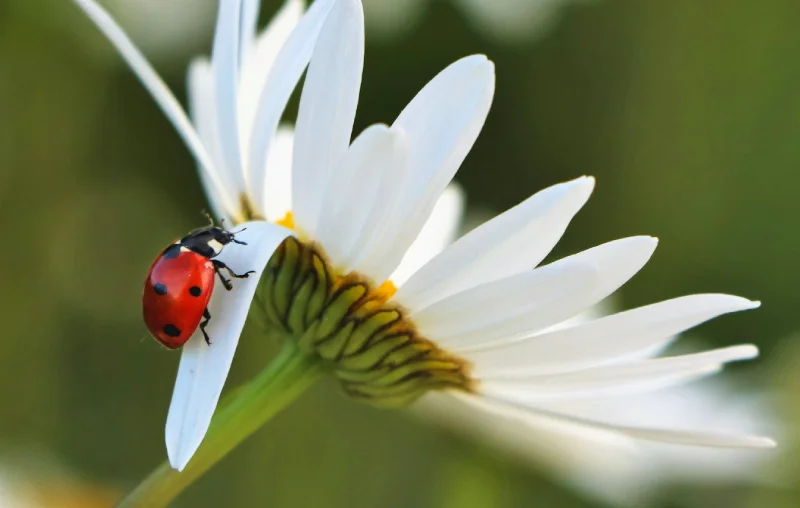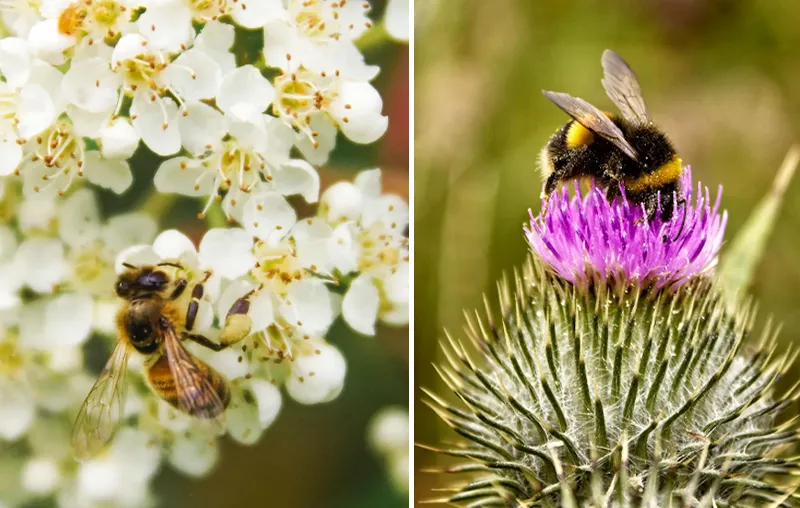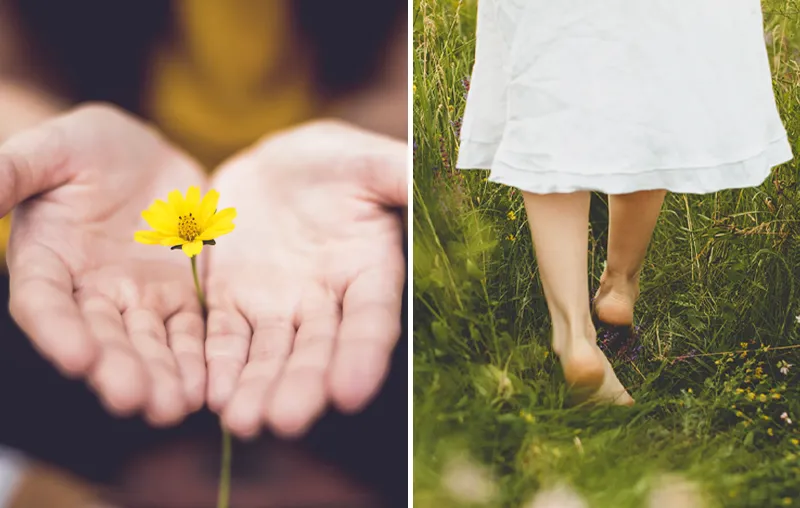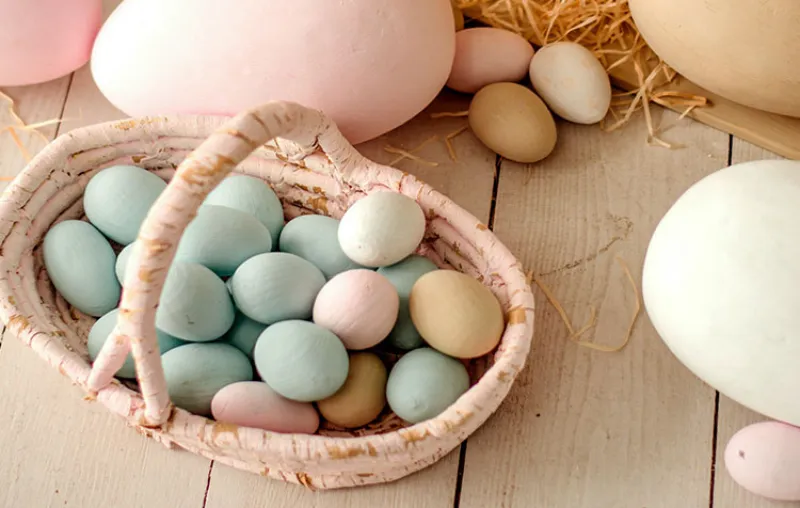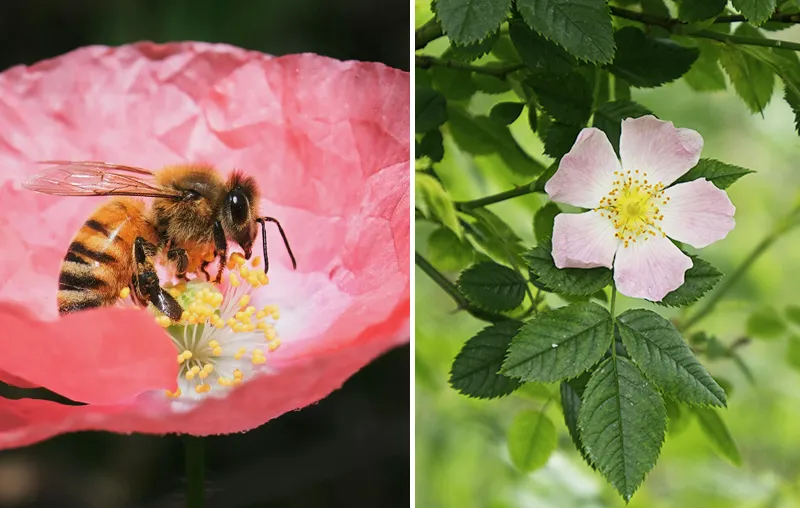Do you want to attract ladybugs and encourage them permanently in your garden? Then you've come to the right place! Ladybugs are real lucky charms and indispensable helpers in your own garden. They do a great job in the natural control of aphids in particular: a single ladybug can exterminate several thousand aphids in the course of its life! 🙂
In this article, I'll introduce you to other motifs and give you the best tips for magically attracting the beneficial red insects and providing them with the best possible habitat. Let's go!
Why Invite Ladybugs into Your Garden?
Ladybugs are not only pretty to look at, they are also real superheroes in the natural garden. Here in Germany and Europe, the Seven-spot ladybug (Coccinella septempunctata) and plays an important role in the ecological balance.
By specifically promoting it and related native species, you also protect the local biodiversity and make it more difficult for foreign species such as the Asian harlequin ladybug (Harmonia axyridis), displace native ladybugs.
These advantages a ladybird-friendly garden:
- Fighting pests naturallyLadybugs and their larvae exterminate huge quantities of scale insects, aphids, spider mites and even mildew fungi - without any chemicals.
- Stop species extinction: By protecting native ladybugs, you are helping to preserve a healthy, stable ecosystem and the environment. biodiversity at.
- Creating living spacesA ladybird-friendly garden also benefits many other beneficial insects such as wild bees, hoverflies, lacewings and butterflies.
- Enjoy natural aestheticsThe habitat with wildflowers, shrubs and near-natural structures such as piles of leaves not only make your garden more beautiful, but also much more lively. Among other things, you benefit from relaxing sounds of nature like the buzzing and humming of the insect world.
10 Tips to Attract Ladybugs to Your Garden Naturally
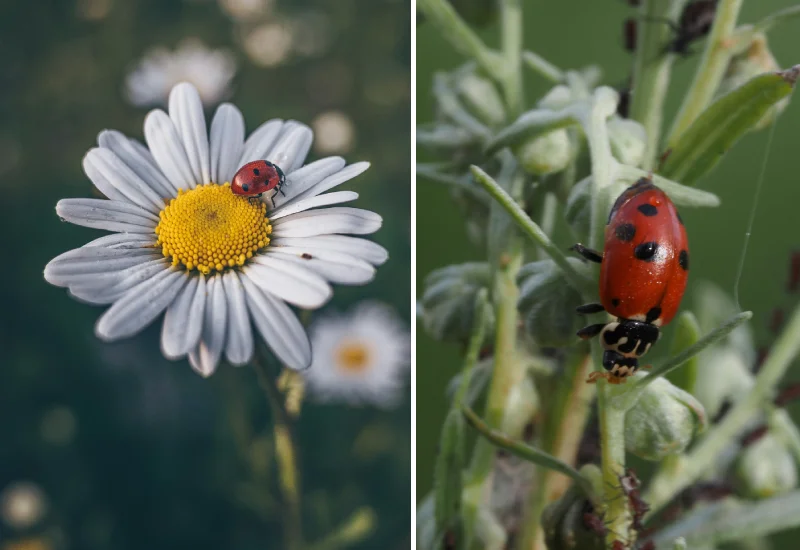
Of course, nowadays it is also possible to buy ladybug larvae in order to establish them quickly and specifically in the garden. However, I would advise against this. Firstly, because they are still animals and not products - and secondly, because, according to NABU, they are often Introduced neozoa and not native ladybug species. As a result, they could even displace native ladybugs and other beneficial insects in the garden.
Rather invite the native ladybugs through targeted measures in a natural way in your garden or on your balcony. Here are simple but proven tips for you that will definitely help!
1. Plant Native Wildflowers and Herbs
If you don't have any ladybugs in your garden yet, this could also be due to too many exotic but unfortunately ecologically worthless plants that are often offered in traditional plant centers these days.
In contrast, wild flowers and wild herbs are true paradises for ladybugs. They not only offer Pollen and nectarbut also attract numerous species of aphids on which the lucky beetles and their larvae feed. A rich buffet and ideal natural conditions!
Here I have listed some wild plants for ladybugs that you should definitely have in your garden or on your balcony:
- Common Yarrow (Achillea millefolium)
- Wild Carrot (Daucus carota)
- Meadow knapweed (Centaurea jacea)
- Cornflower (Centaurea cyanus)
- Corn poppy (Papaver rhoeas)
- True chamomile (Matricaria chamomilla)
- Chives (Allium schoenoprasum)
- Round-leaved mint (Mentha suaveolens)
Most of the perennials are available from well-stocked local plant shops, online at My-beautiful-garden*as a single seed packet (e.g. Organic cornflower seeds*) or Here also directly as mixed wildflower seed for ladybirds*.
Nature garden tip: Perhaps you would also like to create a wild corner in the garden. I will be happy to show you how this works and which structures should not be missing for all garden animals.
2. Install Insect Hotels or Ladybug Shelters
Small Ladybug houses (e.g. this one*) or Well-designed insect hotels (also often of the "home-made" brand 🙂 ) can be real lifesavers when the colder season arrives. Small chambers and protected areas offer ladybugs a safe haven for the winter.
Particularly practical: the ladybugs awaken there in spring precisely whenwhen aphids often appear explosively - and are directly available for natural pest control ready. So get yourself a small wooden house to attract ladybugs.
3. Grow Native Shrubs for Shelter and Food
Dense, flowering shrubs provide ladybugs with ideal Hiding places and Breeding sites.
They also attract attention with their Leaves and Blossoms also feed on different types of aphids, which, as already mentioned, are popular food for ladybugs.
These native shrubs, bushes and large shrubs are particularly suitable:
- Sloe (Prunus spinosa, is available here*)
- Common Hawthorn (Crataegus monogyna, is available here*)
- Elderberry (Sambucus nigra, is available here*)
- Dog Rose (Rosa canina, is available here*)
- Cotoneaster (Cotoneaster integerrimus)
4. Say No to Pesticides
If you want to attract ladybugs, the use of chemical weed killers and plant protection products are definitely taboo. They not only kill pests, but also countless beneficial insects, including the aphid-eating seven-spot ladybugs.
Instead, opt for organic products such as Nettle liquid manure or a powerful shower with water to prevent pests in your Natural garden to keep them in check. This maintains the ecological balance - and ladybugs feel at home in the long term.
5. Provide Deadwood and Natural Hiding Places
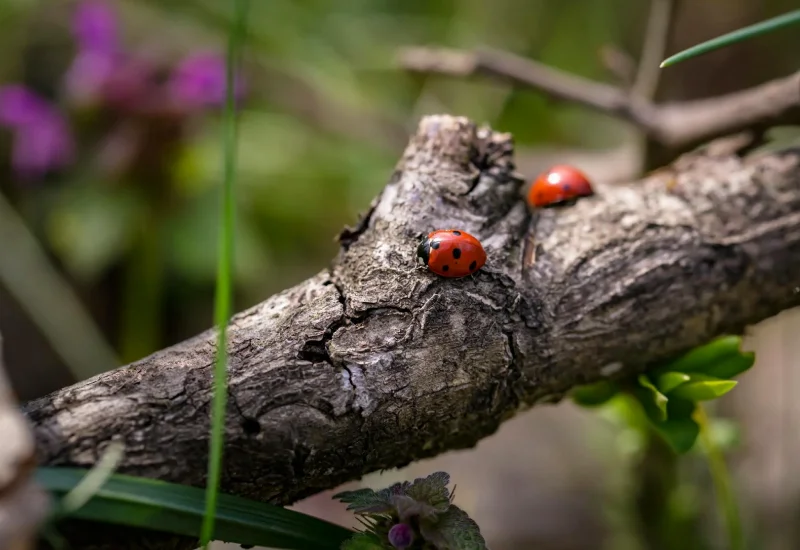
A deadwood trunk or a pile of deadwood made of branches, Branches and Bark provides an ideal hiding place for many insect species - including the ladybug, of course. The old wood protects them from wind, weather and predators and provides warmth. The wilder and more natural the pile, the better!
In addition Cairn, Scoring in a Natural stone wall, left standing hollow plant stems or of course also Self-built beetle cellar provide additional cavities in the garden that ladybugs use for overwintering or laying eggs.
Good to know: In spring, female ladybugs lay around 10-30 eggs - usually near aphid colonies, which later serve as food. The larvae hatch from the eggs after about ten days. In warm weather and with sufficient food, they grow within 2-3 weeks. They then pupate - and after just a few days the (still) very small ladybugs hatch.
6. Use Ground Covers That Support Insect Life
Ground cover plants serve a low-maintenance gardenbecause they help against weeds - but they also create Protected areas for ladybugs and their larvae, in which they also find food.
Here are some native ground coverthat you can use to support ladybugs in your garden and provide them with a valuable habitat:
- Ivy (Hedera helix, is available here*)
- Sand thyme (Thymus serpyllum, is available here*)
- Creeping groundsel (Ajuga reptans, is available here*)
- Groundsel (Glechoma hederacea, is available here*)
- Woodruff (Galium odoratum)
7. Let Your Lawn Grow Wild and Bloom
A classic, perfect ornamental lawn offers hardly any habitat for ladybugs. A species-rich lawn is much more valuable, Near-natural meadowwhere important wild plants are allowed to grow and flower undisturbed.
It would even help if you just let your lawn grow a little longer and let it only three to five times a year or only mow different sections at a time. (see also Mowing-free May)
Because then many ladybird-friendly native wild plants the chance to develop.
These include, for example:
- Meadow clover (Trifolium pratense)
- Common dandelion (Taraxacum officinale)
- Daisies (Bellis perennis)
Supplemented by Meadow daisy (Leucanthemum vulgare), Meadow Sage (Salvia pratensis) and other flowering plants, a lively wildflower meadow is created that attracts ladybugs and many other beneficial insects.
Tip: If you want to create a near-natural meadow for the popular lucky beetles, I can offer you the following tips once again this flower mixture* which specifically serve the ladybugs.
8. Choose Bug-Friendly Garden Trees
Insect-friendly trees are for ladybugs Important retreats - especially if they have dense, flowering crowns and a natural aphid population.
These trees love ladybugs and countless other insects, for example:
- European Wild Apple (Malus sylvestris, buy here*)
- Wild Cherry (Prunus avium, buy here*)
- Common Pear (Pyrus communis, buy here*)
- Goat Willow (Salix caprea, buy here*)
- German oak (Quercus robur, buy here*)
Little space in the garden? Then be sure to take a look at the lists with insect-friendly small trees and wild bee-friendly shrubs to. There you will find smaller plants with high ecological value.
9. Provide Water and a Natural Elderflower Attractant
Ladybugs need water too! A shallow Clay bowl with stones as a landing pad ensures that the busy little creatures don't die of thirst even in the hot summer months. Wild bees are happy too!
If you like, you can, for example, work with such a small zinc tub* also create a mini pond in which you also offer landing areas.
I would also advise you to make a special elderflower drink to attract the ladybugs. Simply Mix elderflowers and water in a ratio of 1:10heat and leave to infuse for a day. You can then spray the mixture on certain plants or throughout the garden 🙂
10. Leave Leaf Piles as Cozy Winter Shelters
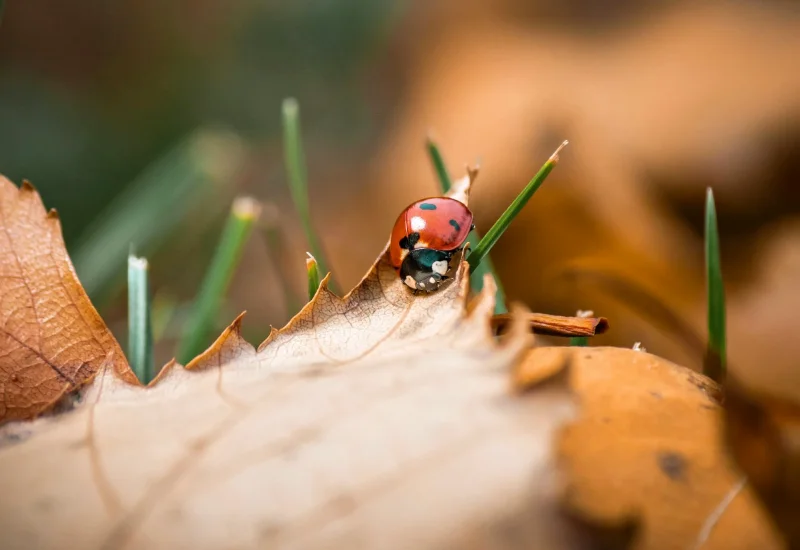
Piles of leaves are also safe Winter quarters for ladybugsas the popular beneficial insects can survive the cold season buried deep inside.
So instead of meticulously raking everything away in the fallyou can save yourself the work and simply create a Collect some of the leaves in a quiet corner and leave them lying around.
This is a real simple measureif you want to introduce ladybugs to your garden. They and other insects, as well as mammals such as hedgehogs, will thank you for it.
Attracting Ladybugs Made Easy
The dotted ladybugs are simply wonderful and it makes me proudwhen they fly around our garden and crawl over the plants. And by the way, they are also an extremely effective way of controlling aphids naturally.
Here today you have learned how you can attract ladybugs and regularly admire them in your garden. Especially natural ones, sustainable gardeninga varied food supply and suitable hibernation and hiding places are the The key to happiness. 🙂
"Any stupid boy can crush a beetle. But all the professors in the world can't make one."
Arthur Schopenhauer (more at Environmental protection quotes)
Do you have any questions or other tips from your own experience for attracting ladybugs to your garden? Then I look forward to your comment!
Stay environmentally conscious,

PS: If you would like to learn more about natural gardening, I can highly recommend the book Wild & colorful: Designing natural gardens with native plants* to the heart.

